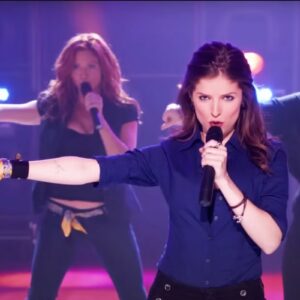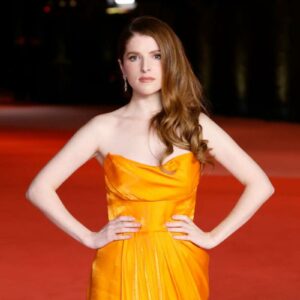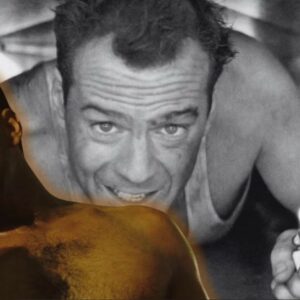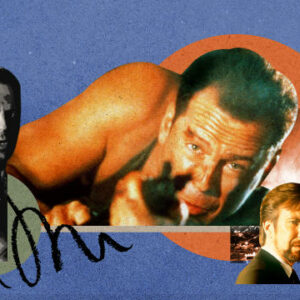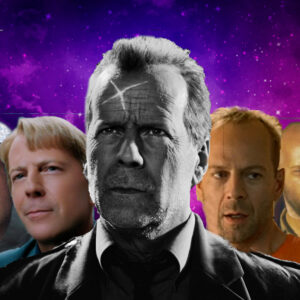The Magic Behind Brad Pitt’s On-Screen Transformations: A Deep Dive into Costume and Makeup
Brad Pitt is renowned for his ability to disappear into a wide array of roles, from the charismatic yet menacing Tyler Durden in “Fight Club” to the brooding, historical Achilles in “Troy.” His transformation from one character to another often feels seamless and effortless, but behind the scenes lies a complex process involving costume and makeup design. This article explores how these elements contribute to Brad Pitt’s remarkable on-screen metamorphoses, offering an in-depth look at the artistry and craftsmanship that make his roles so unforgettable.
1. The Importance of Costume Design
Costume design is a crucial aspect of filmmaking that goes beyond mere clothing. It helps define a character’s personality, era, and even social status. For Brad Pitt, costume designers have played a pivotal role in crafting his characters’ identities.
1.1 Creating a Visual Identity
Costume designers work closely with actors to create a visual identity that aligns with the character’s story arc and personality. For instance, in “The Curious Case of Benjamin Button,” Pitt’s character ages backward, and the costume design had to reflect his physical transformation throughout different stages of his life. The designers used period-appropriate clothing to signify the passage of time and to visually convey the character’s evolving identity.
1.2 Collaborating with Directors and Actors
Collaboration is key in costume design. Designers must understand the director’s vision and work with the actor to ensure that the costume enhances rather than detracts from the performance. In “Inglourious Basterds,” Pitt’s character, Lieutenant Aldo Raine, wears a distinctive cowboy hat and leather jacket that evoke a sense of ruggedness and authority. The choice of these costumes complements both the character’s backstory and Quentin Tarantino’s unique directorial style.
1.3 Historical and Cultural Accuracy
For roles set in specific historical or cultural contexts, costume design requires rigorous research. In “Troy,” the costume team recreated the armor and garments of ancient Greece, ensuring historical accuracy while also providing practical considerations for filming. The intricate details of Achilles’ armor not only enhanced the visual spectacle of battle scenes but also added authenticity to Pitt’s portrayal of the legendary warrior.
2. The Role of Makeup in Transformation
Makeup is another vital element in transforming Brad Pitt into his diverse roles. It can drastically alter an actor’s appearance, allowing them to embody characters that are physically and visually distinct from their real selves.
2.1 Enhancing Physical Characteristics
In “The Curious Case of Benjamin Button,” makeup artists used prosthetics and aging techniques to transform Pitt from a young man into an old one. This involved applying layers of makeup to simulate aging and creating prosthetic pieces to alter facial features. The result was a convincing portrayal of a man experiencing life in reverse, with makeup playing a crucial role in making the transformation believable.
2.2 Creating Fantastical Characters
Makeup also plays a significant role in creating characters that are far removed from reality. In “Fight Club,” the character of Tyler Durden is depicted with distinctive makeup that emphasizes his rebellious and anarchic nature. The makeup team used a combination of cosmetics and special effects to give Pitt’s character a rough, disheveled look that aligns with the film’s gritty aesthetic.
2.3 Seamless Integration with Costume
Effective makeup design must work in harmony with costume design. In “World War Z,” for instance, the makeup team created a range of zombie looks, from the grotesque to the more subtle. These looks had to blend seamlessly with the post-apocalyptic costumes to ensure that the zombies were both visually striking and consistent with the film’s overall design.
3. Case Studies of Iconic Brad Pitt Transformations
To illustrate the impact of costume and makeup design on Brad Pitt’s performances, let’s examine a few iconic roles in detail.
3.1 Tyler Durden in “Fight Club”
Tyler Durden is one of Brad Pitt’s most memorable characters, and his look is a significant part of his persona. The costume design for Tyler Durden features a mix of high fashion and rebellious elements, including a distinctive red leather jacket and stylish sunglasses. The makeup for Durden emphasizes his rugged and disheveled appearance, with strategic use of cosmetics to create a look that is both alluring and unsettling. The combination of these elements helps to establish Durden as a charismatic yet dangerous figure, central to the film’s exploration of identity and self-destruction.
3.2 Benjamin Button in “The Curious Case of Benjamin Button”
The transformation of Benjamin Button over the course of his life required extensive makeup work. The character starts as an old man and ages backward, necessitating complex makeup effects to depict the aging process convincingly. The makeup team used prosthetics, aging techniques, and digital effects to create a seamless transition between the different stages of Benjamin’s life. The attention to detail in the makeup design ensures that Pitt’s performance is both believable and emotionally compelling.
3.3 Achilles in “Troy”
In “Troy,” Brad Pitt’s portrayal of Achilles required a blend of historical accuracy and cinematic flair. The costume design team recreated ancient Greek armor and garments with meticulous attention to detail, enhancing the epic scale of the film. Pitt’s costumes, including the iconic golden armor, helped to define his character as a legendary warrior. The makeup design complemented the costumes by creating a battle-worn appearance that added depth to Achilles’ character.
4. The Evolution of Costume and Makeup Techniques
Over the years, costume and makeup techniques have evolved, allowing for even more impressive transformations. Advances in technology and materials have expanded the possibilities for filmmakers.
4.1 Advances in Prosthetics and Special Effects
Modern prosthetics and special effects have revolutionized the field of makeup design. In films like “World War Z,” advanced makeup techniques are used to create a wide range of zombie looks, from subtle changes to dramatic transformations. These advancements allow for greater creativity and realism in character design, enhancing the overall impact of the film.
4.2 Digital Enhancements
Digital technology has also become an integral part of costume and makeup design. In “The Curious Case of Benjamin Button,” digital effects were used in conjunction with practical makeup to achieve the complex aging process. This combination of techniques allowed for a more nuanced and realistic portrayal of the character’s unique condition.
5. The Impact on Audience Perception
The impact of costume and makeup design extends beyond the film itself. These elements play a crucial role in shaping audience perception and contributing to the overall success of a film.
5.1 Immersive Storytelling
Costume and makeup design contribute to immersive storytelling by helping audiences suspend disbelief and fully engage with the characters. When done effectively, these elements enhance the viewer’s connection to the story and make the characters more relatable and memorable.
5.2 Influencing Character Perception
The visual aspects of a character can significantly influence how they are perceived by the audience. For example, Tyler Durden’s distinctive look in “Fight Club” reinforces his status as an enigmatic and rebellious figure, while Benjamin Button’s gradual transformation highlights the emotional complexity of his character.
Conclusion
Brad Pitt’s ability to transform into a wide range of characters is a testament to his talent as an actor, but it is also a reflection of the meticulous work done by costume and makeup designers. Through their expertise, these elements bring depth and authenticity to Pitt’s performances, making his characters both visually compelling and emotionally resonant.
Costume and makeup design are integral to the filmmaking process, playing a crucial role in shaping the audience’s experience and enhancing the overall impact of a film. As technology and techniques continue to evolve, the possibilities for character transformation are limited only by the imagination of the creative teams involved. Brad Pitt’s on-screen magic is a result of this collaborative artistry, showcasing the power of costume and makeup in creating unforgettable cinematic experiences.
